THE LINK to #urbanana:
Sacred buildings on the Rhine & Ruhr 2/2 – Concrete divas and holy wooden houses
in English / Reportage: 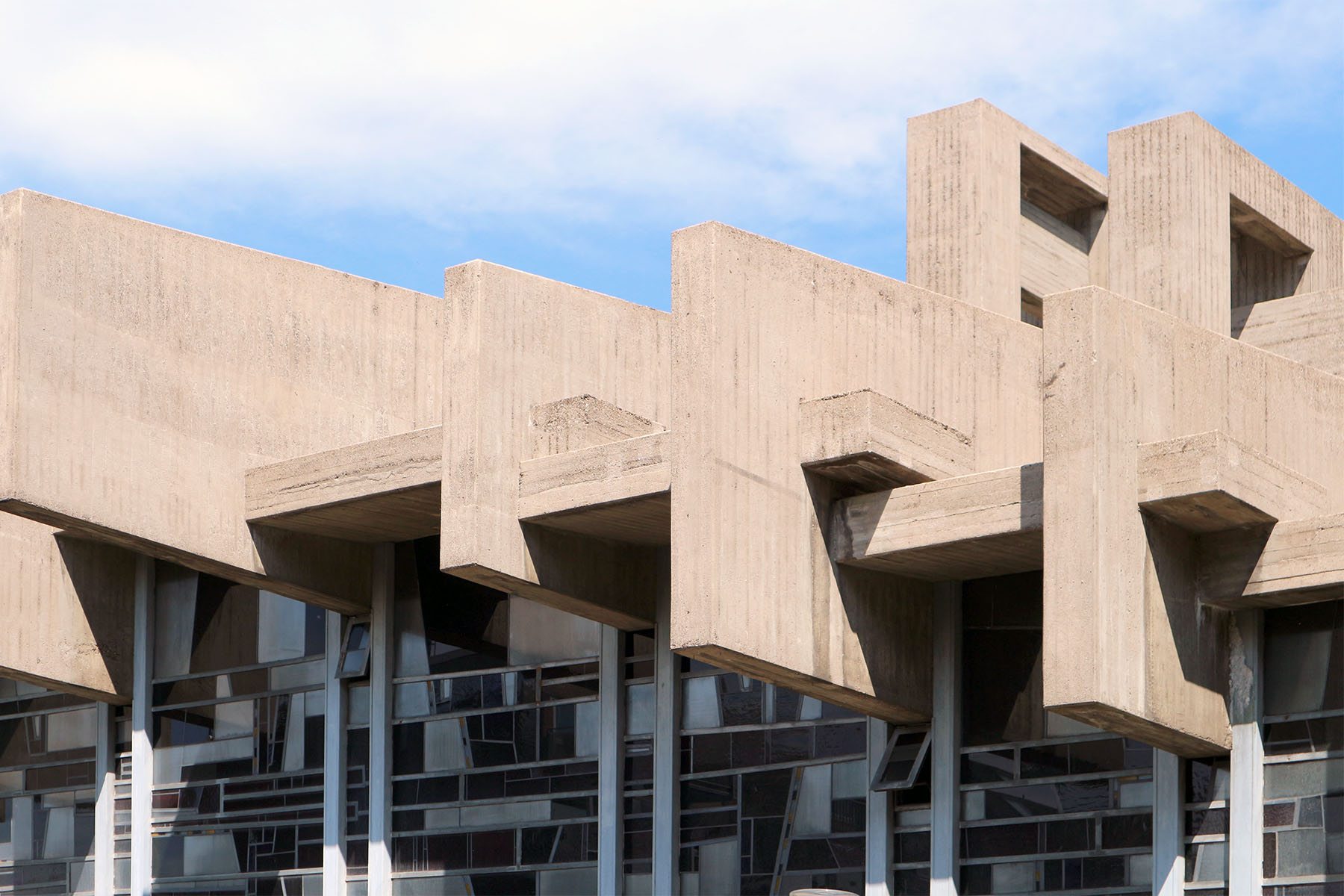
First part of our story on sacred buildings on the Rhine and Ruhr: here.
The tree
The church of the Catholic college community in Cologne is not pleasant, harmonious or cheerful. It is brutal, symbolic and direct. Reinforced concrete branches clutch the brittle glass; they do not aspire to heaven but rather cower and bury themselves in the earth. The architect Heinz Buchmann, and the sculptor Josef Rikus modelled this room sculpture as a metaphor for all that is earthly. Constructivist branches made of concrete break through the massive floor plate, branch out on the surface and float pleasingly over the step-less, cavernous nave. A truly breathtaking building.
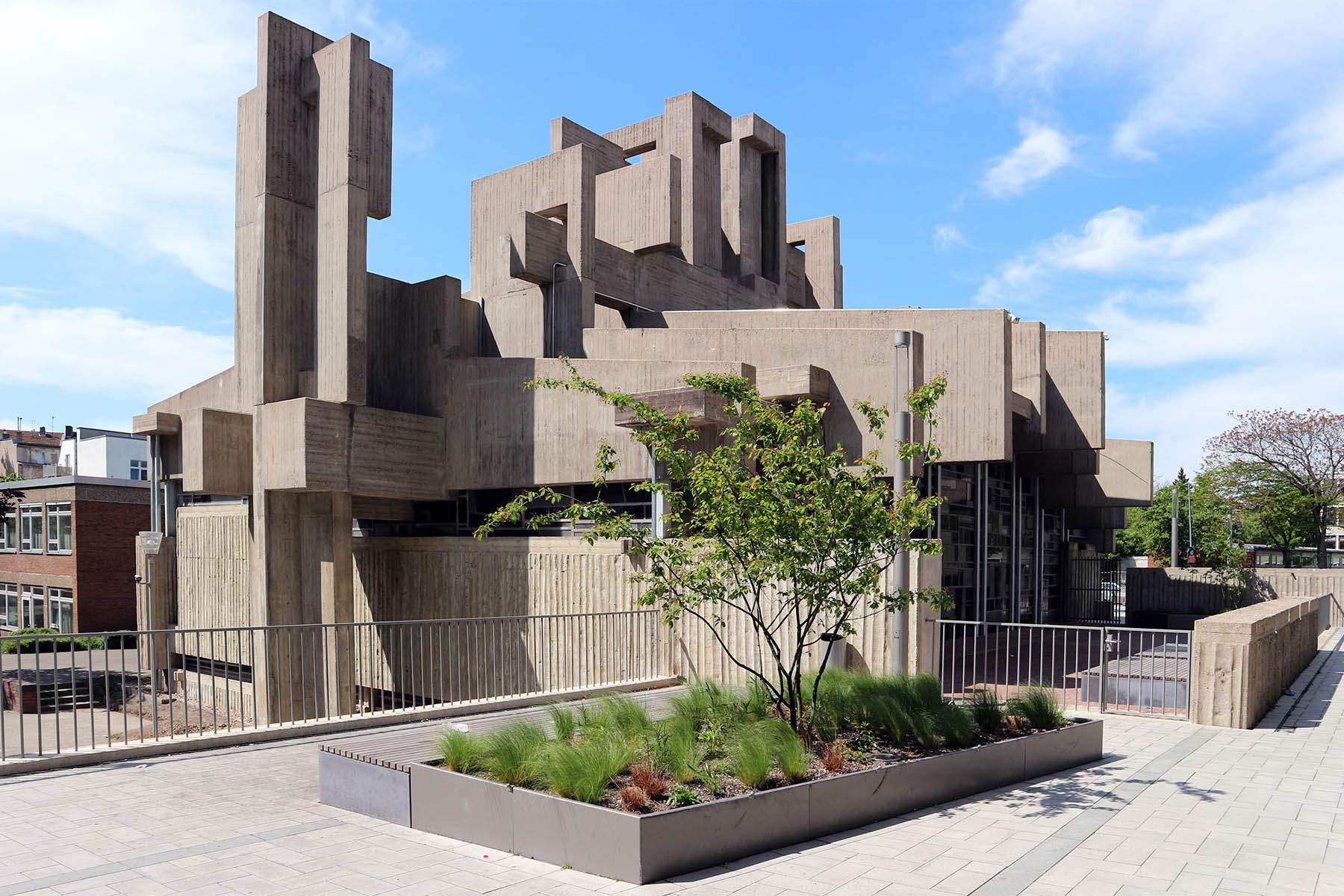
Church of the Catholic college community
By Heinz Buchmann and Josef Rikus. Completion: 1969. Berrenrather Str. 127, 50937 Cologne
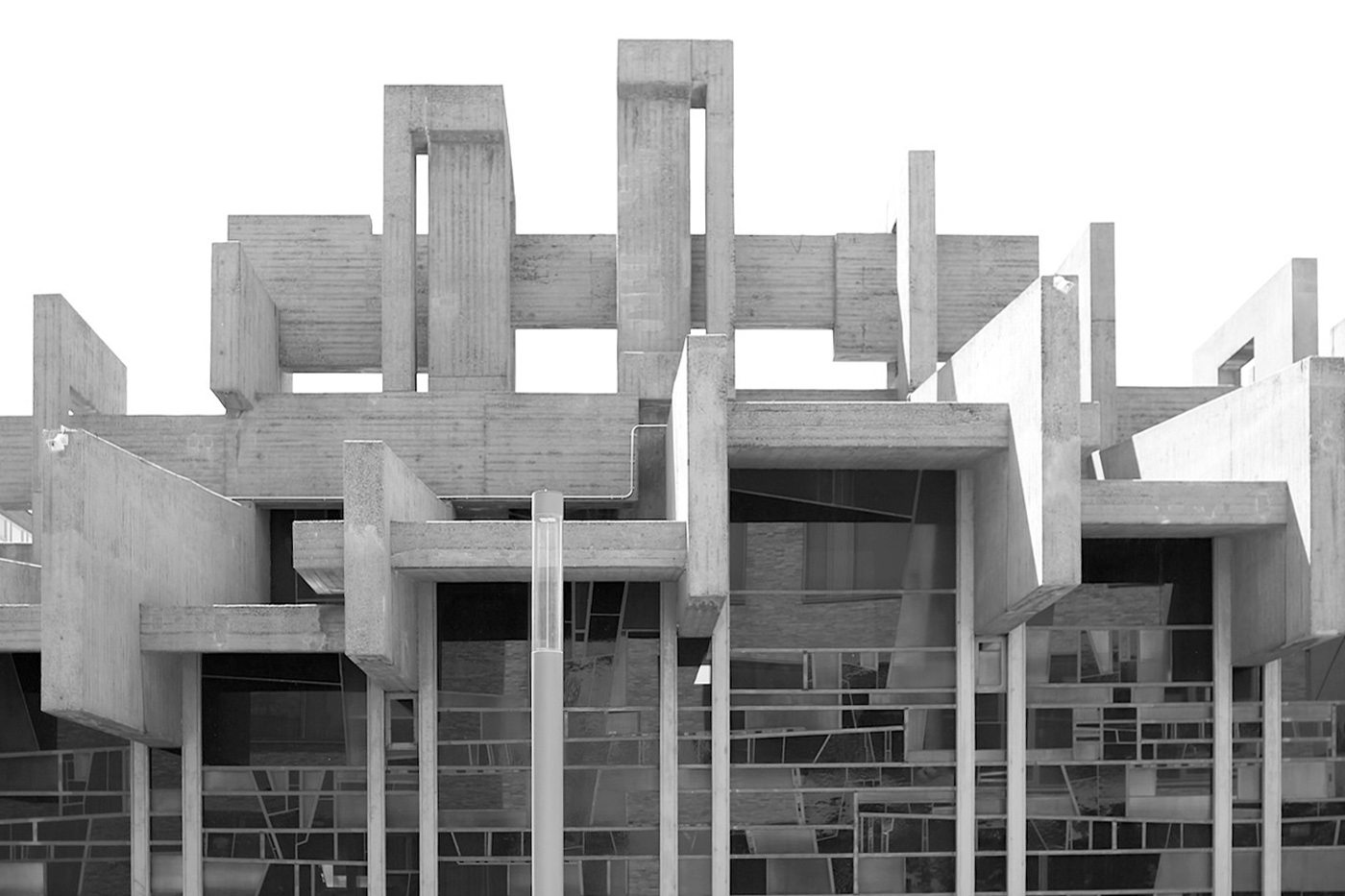
Church of the Catholic college community
Brutal, symbolic, direct.
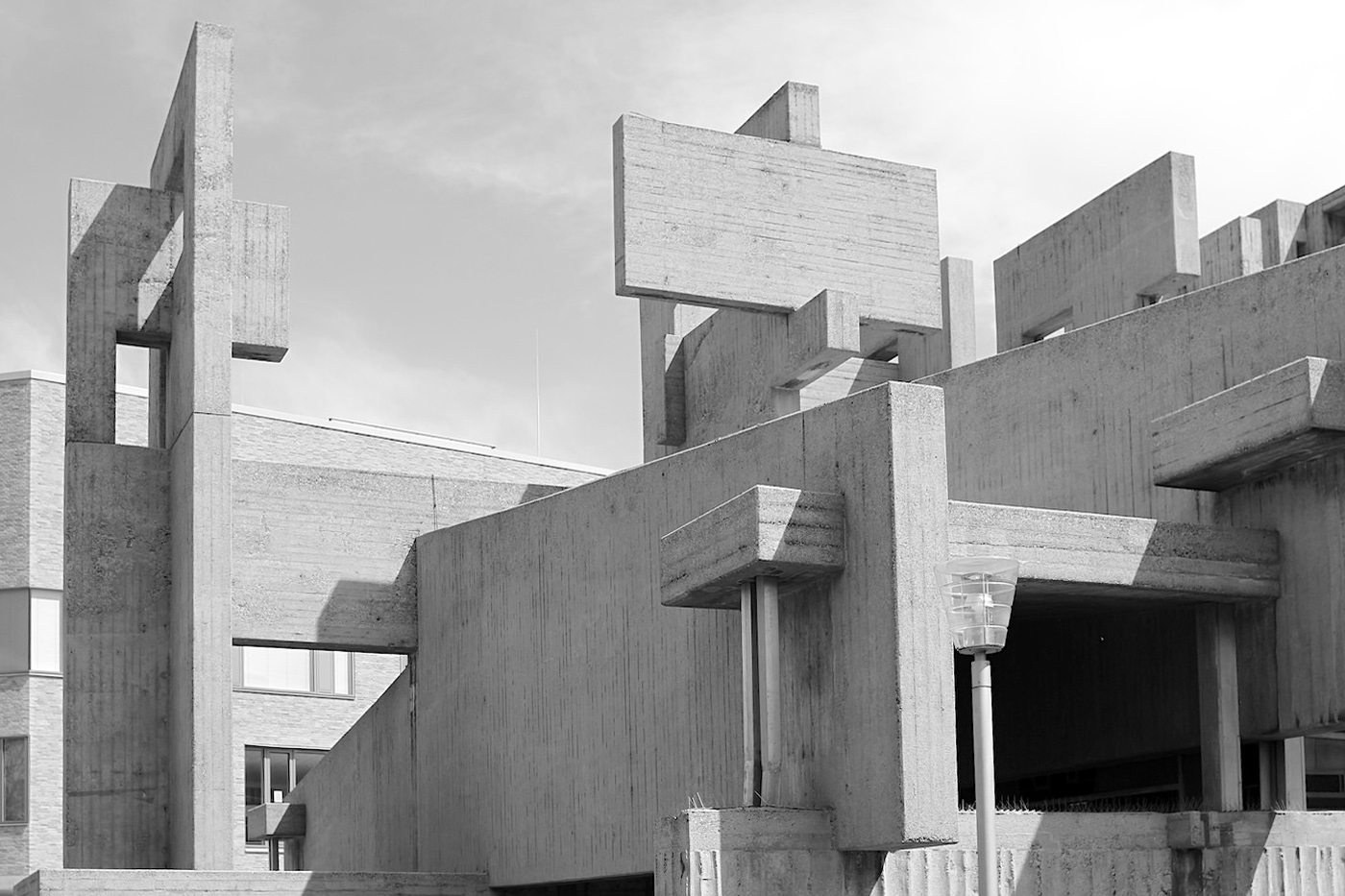
Church of the Catholic college community
Reinforced concrete branches
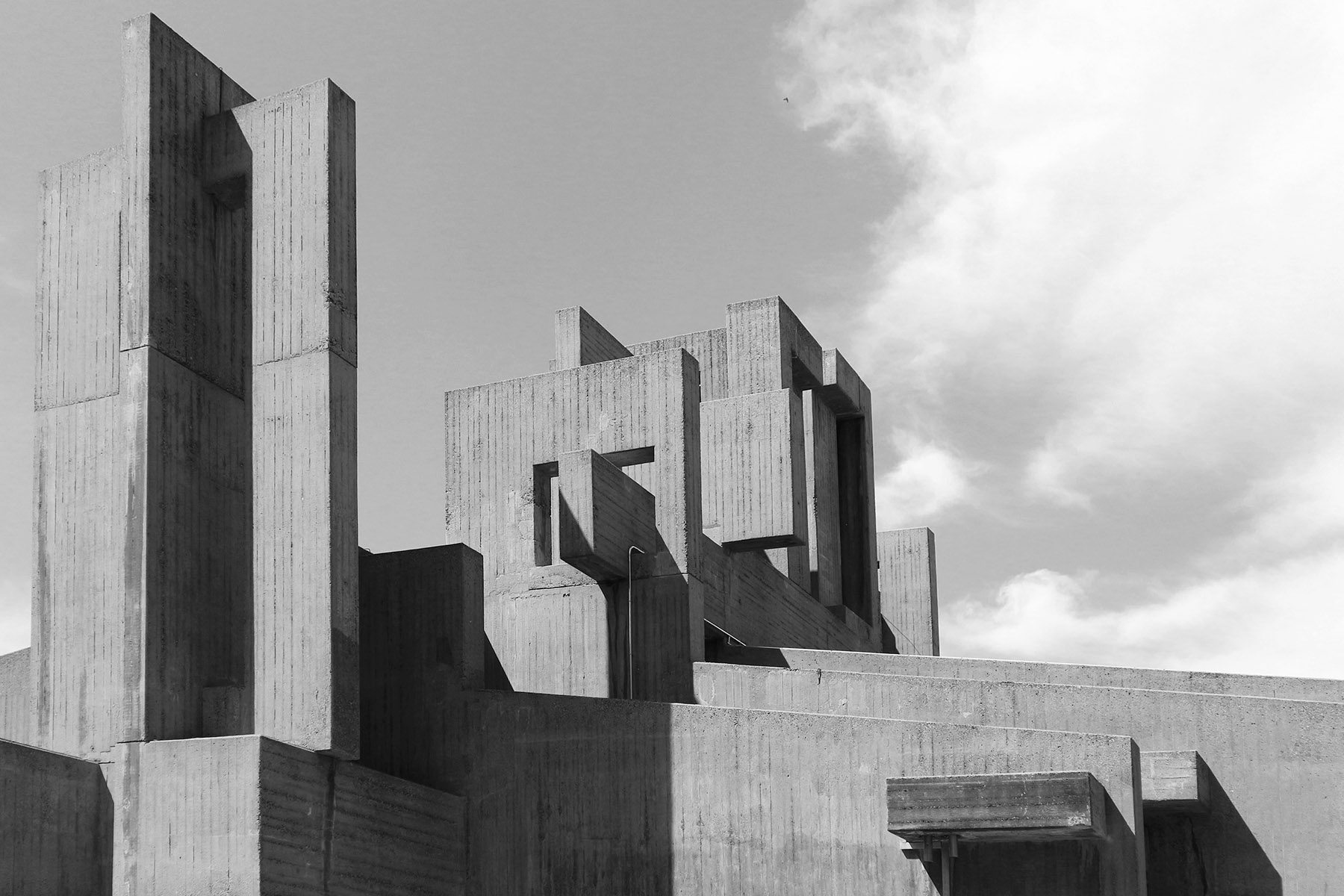
Church of the Catholic college community
The architect Heinz Buchmann ...
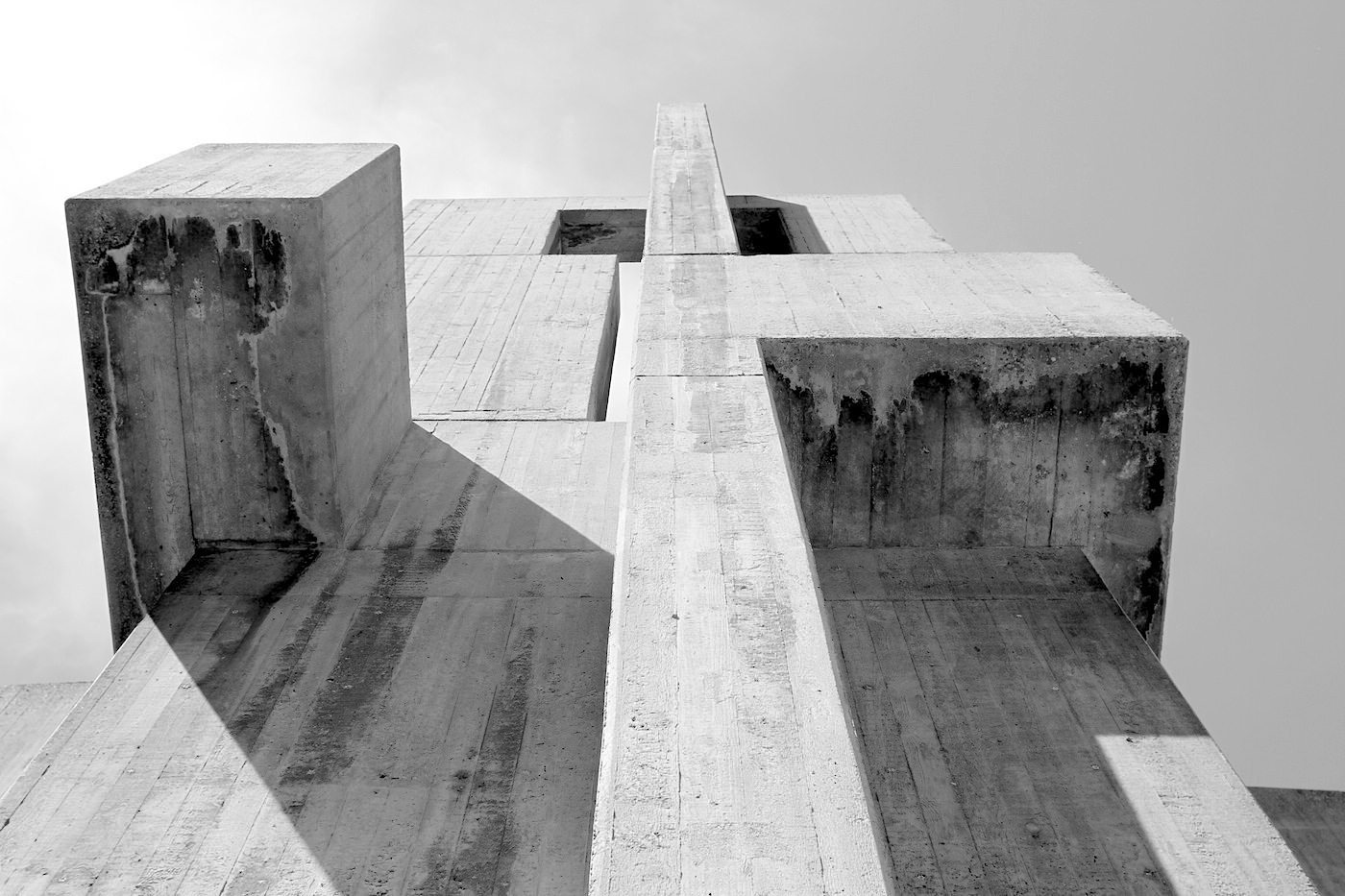
Church of the Catholic college community
... and the sculptor Josef Rikus ...
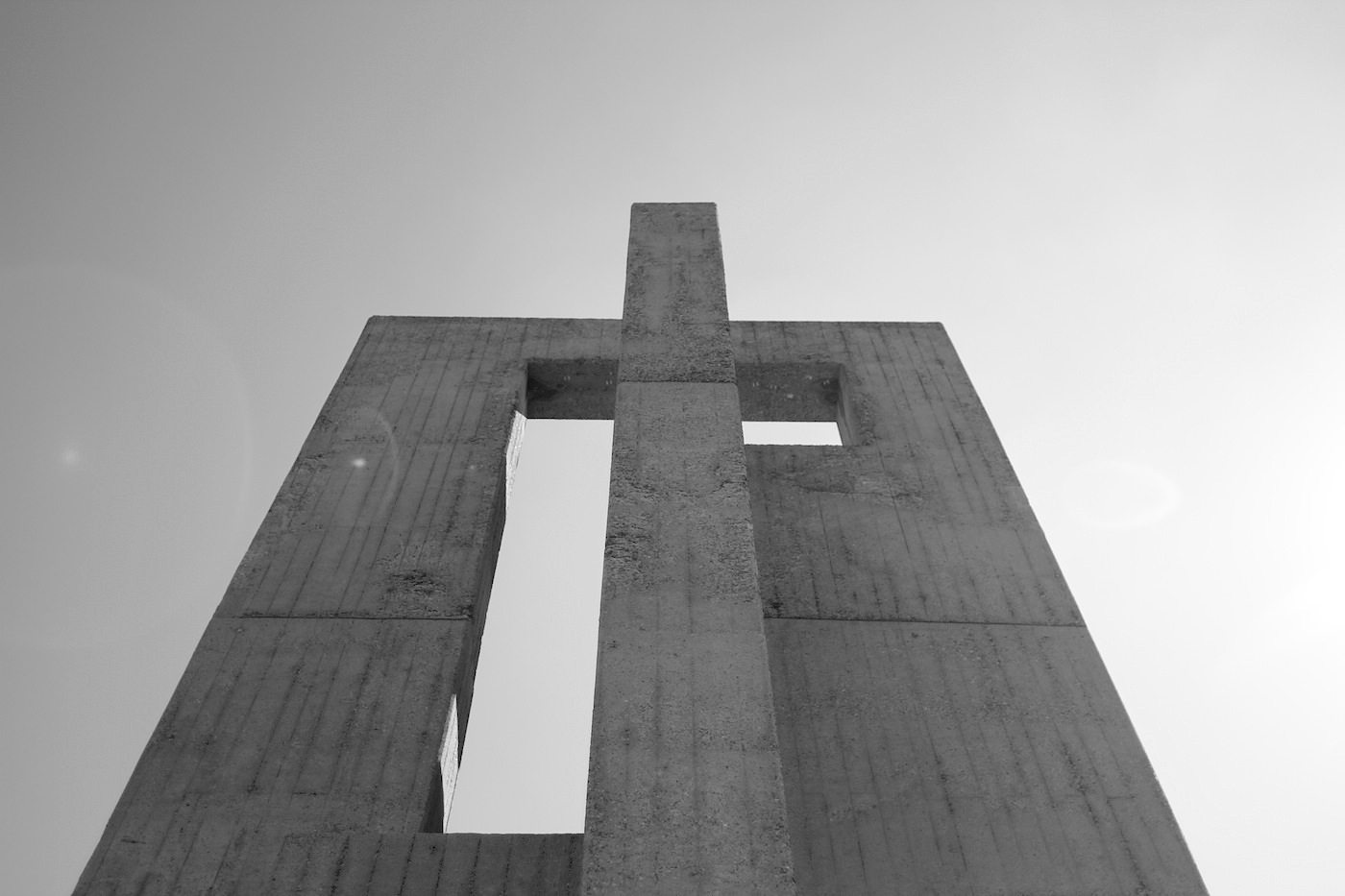
Church of the Catholic college community
... modelled this room sculpture as a metaphor for all that is earthly.
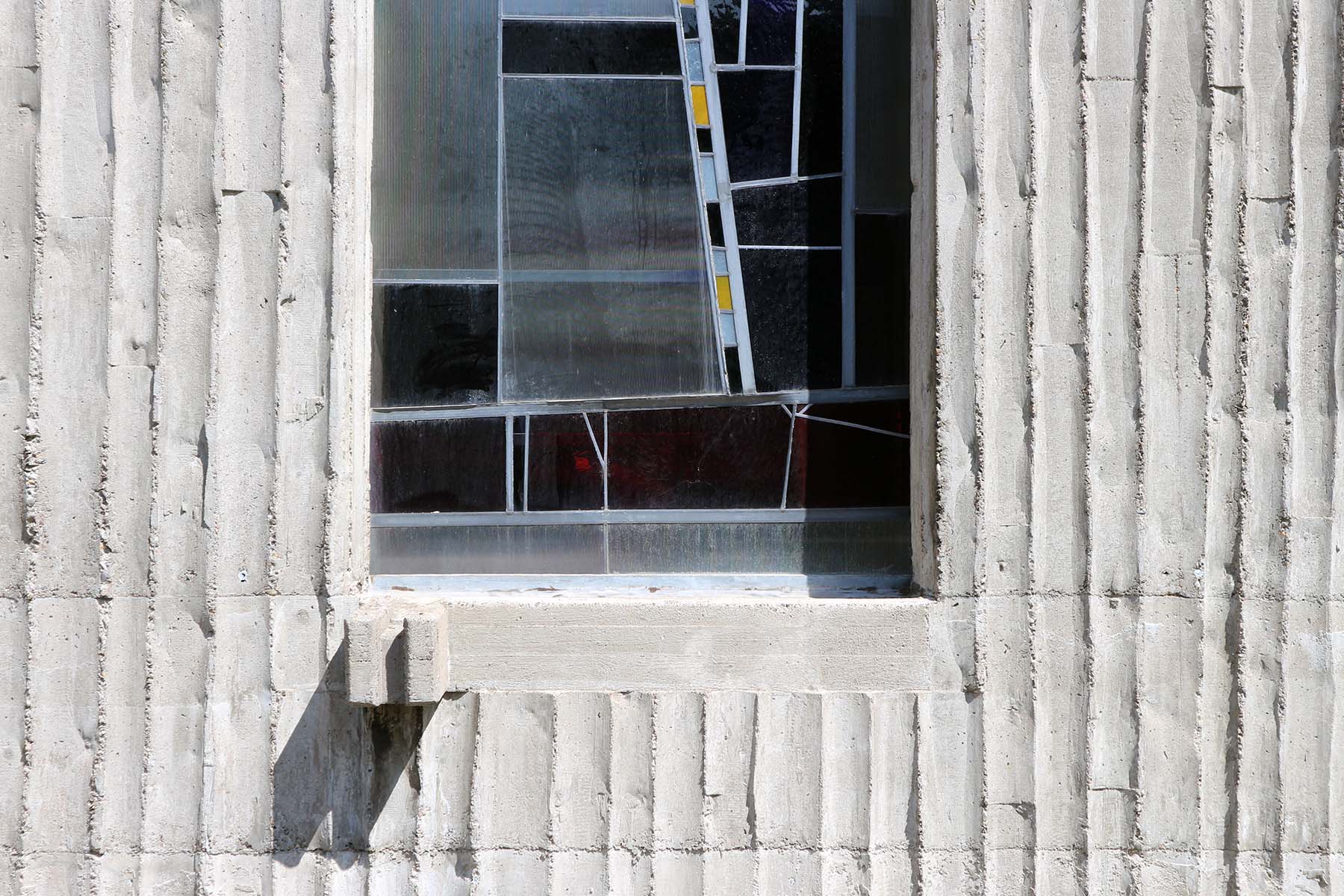
Church of the Catholic college community
Raw and delicate

Church of the Catholic college community
A breathtaking building.
The mountain
The diva of modern sacred buildings in Germany, the pilgrimage church Maria, Königin des Friedens (Mary, Queen of Peace) in Neviges is an eccentric apparition. Some are speechlessly enraptured, others find it “simply hideous” (as experienced on our visit). For me, it was incomprehensible. The concrete-grey mountain imposes from afar. A pilgrimage path leads past a set of stairs (leading to elevated function rooms) up to the main entrance of the church. The entrance seems humble when faced with the massive structure towering over it. Once you have slipped inside, your eyes need a few moments to get used to the darkness – but then the 30 metre high ceiling of concrete folds and the reflections of the vividly coloured windows, typical of Böhm, hit you with their full power.

Pilgrimage church Mary, Queen of Peace (Königin des Friedens)
By Gottfried Böhm. Completion: 1968. Elberfelder Str. 12, 42553 Velbert-Neviges

Pilgrimage church Mary, Queen of Peace (Königin des Friedens)
An eccentric apparition
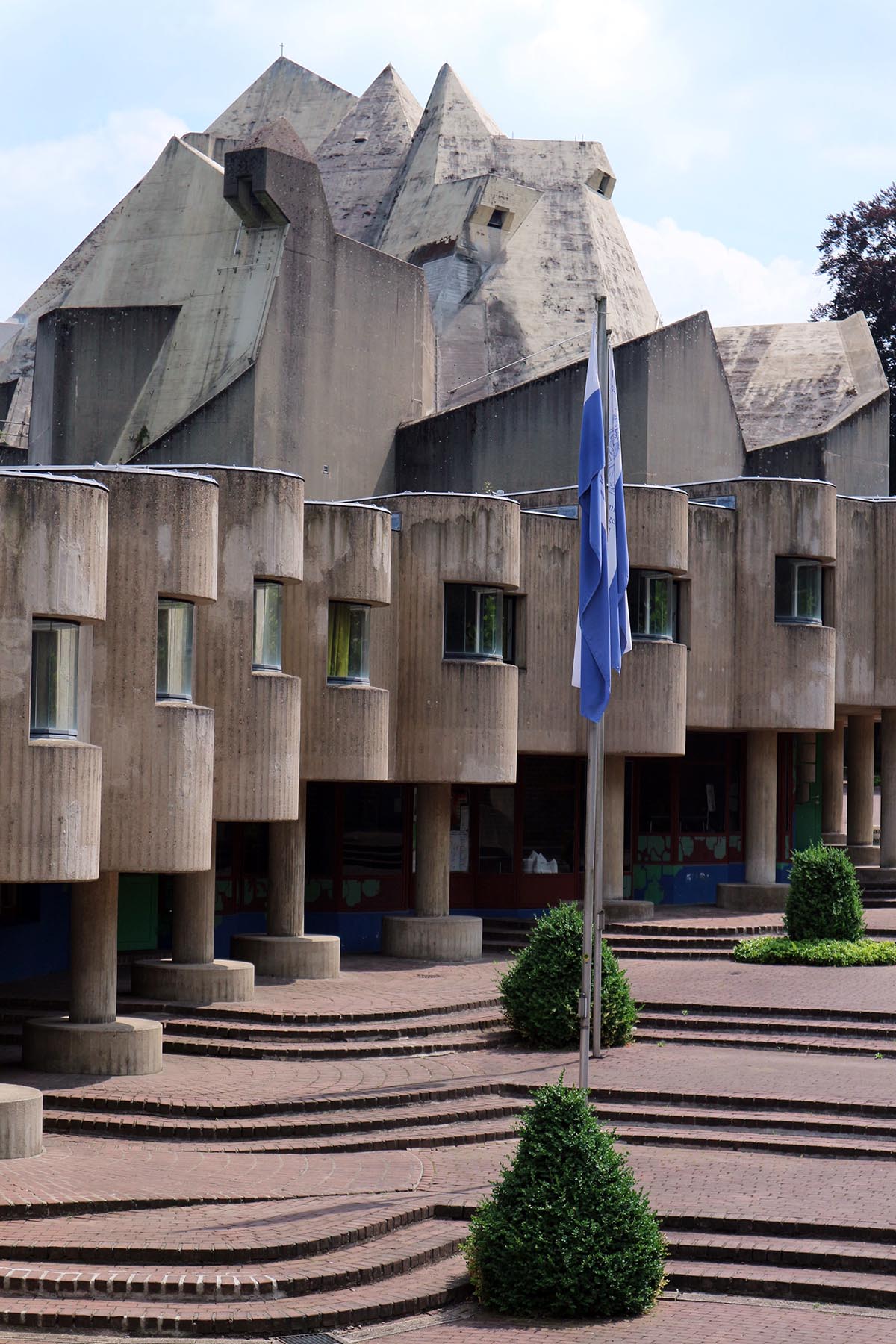
Pilgrimage church Mary, Queen of Peace (Königin des Friedens)
The concrete-grey mountain imposes from afar.
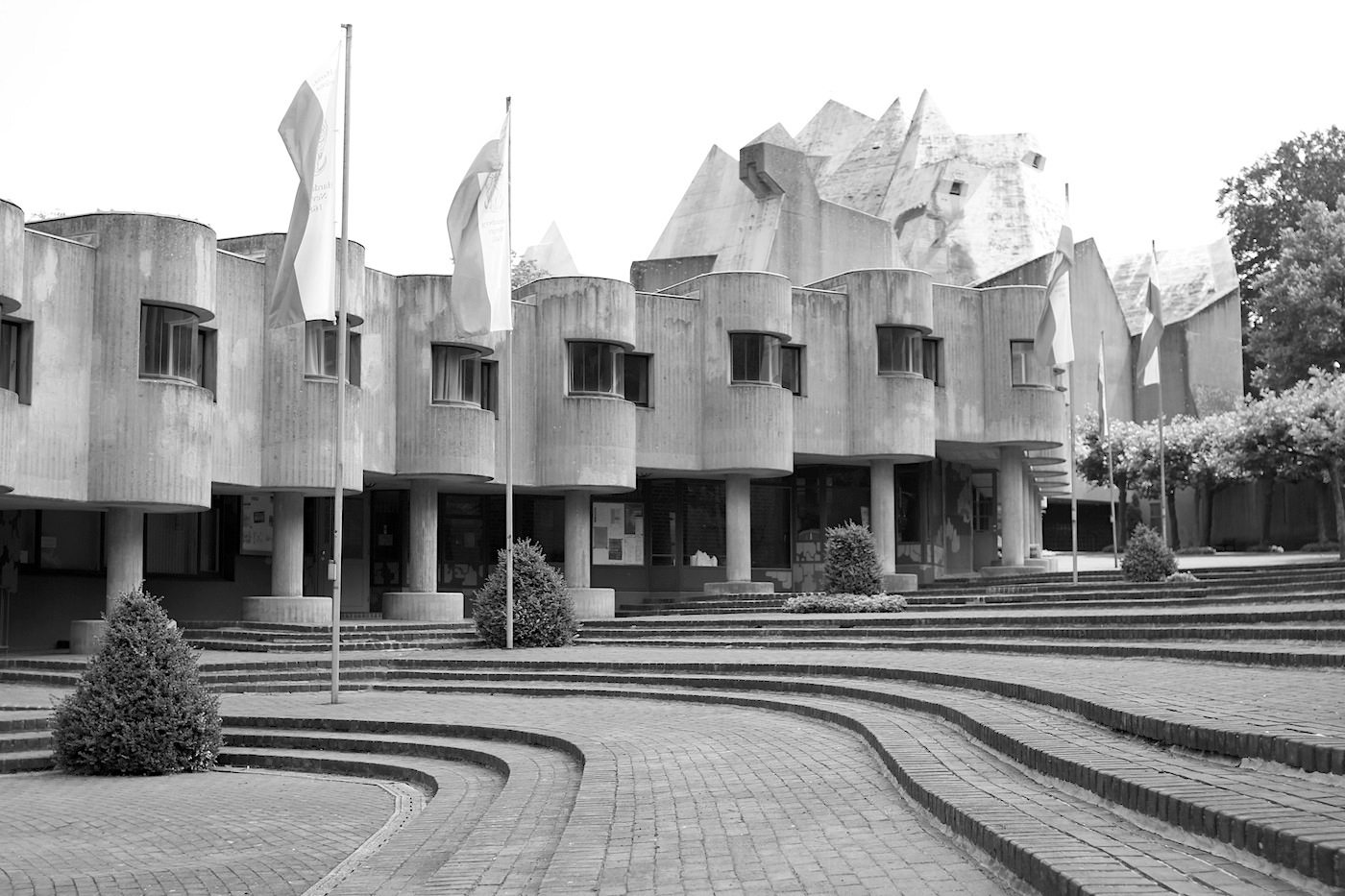
Pilgrimage church Mary, Queen of Peace (Königin des Friedens)
A pilgrimage path leads past a set of stairs ...
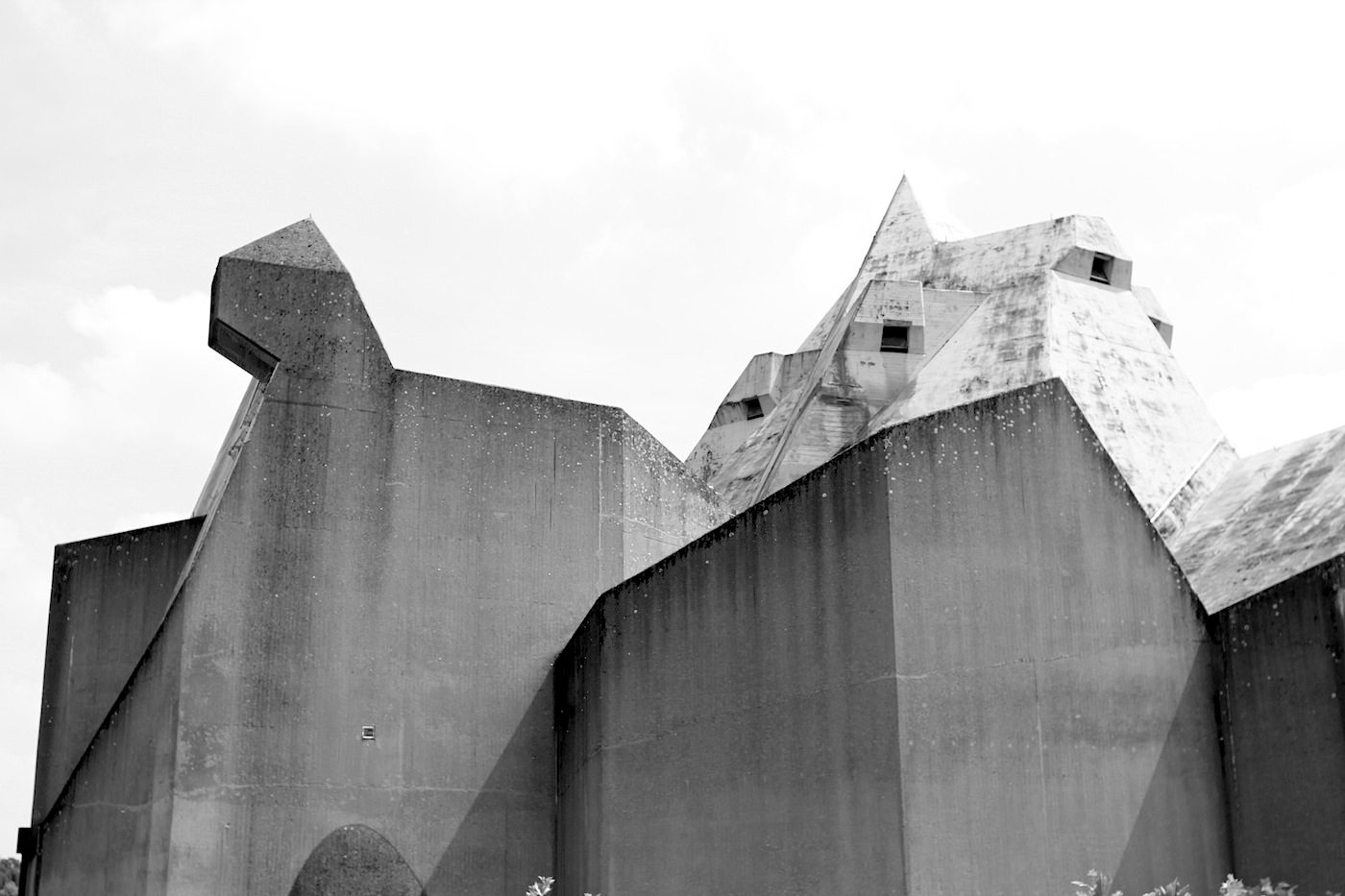
Pilgrimage church Mary, Queen of Peace (Königin des Friedens)
... leading to elevated function rooms up to the main entrance of the church.
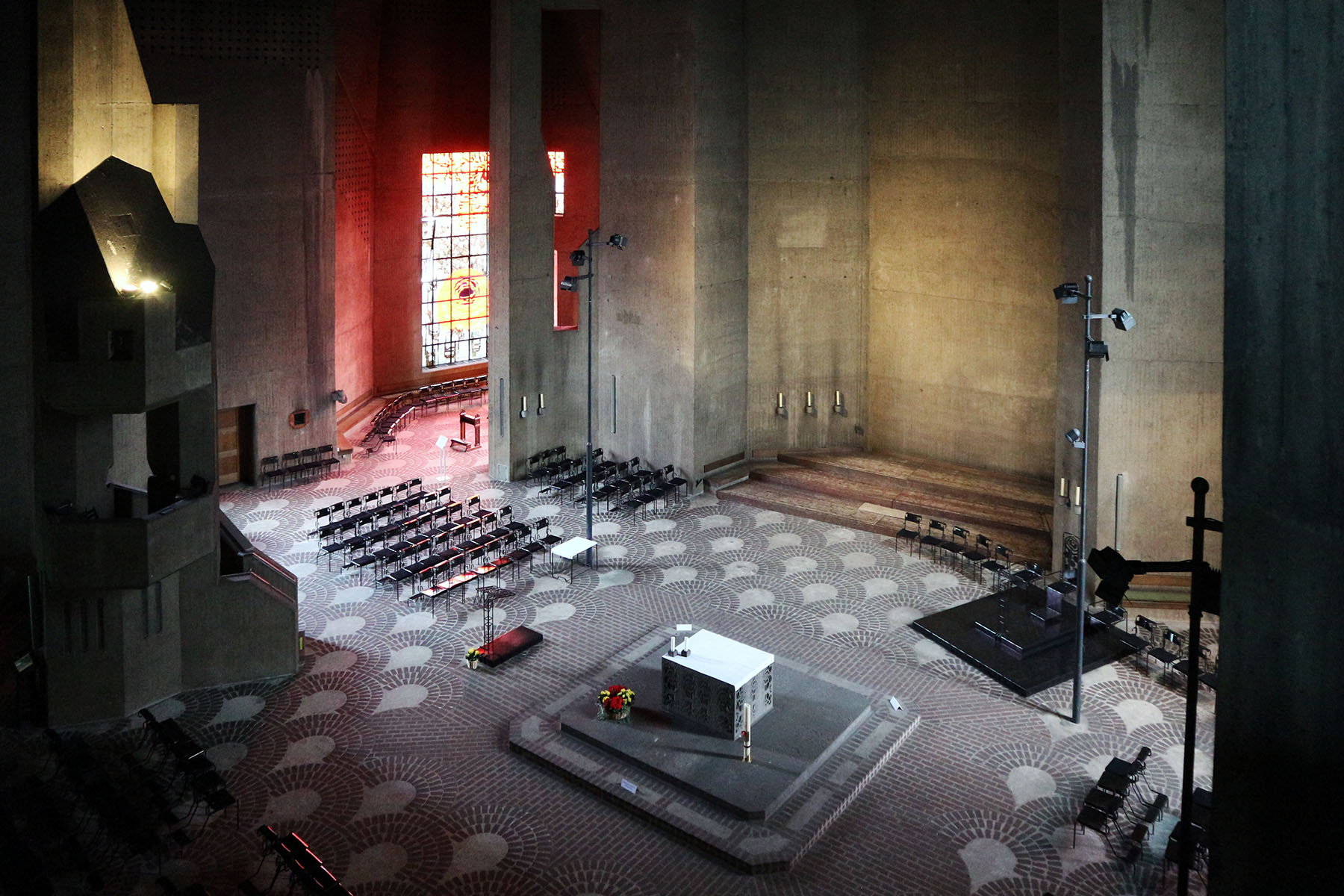
Pilgrimage church Mary, Queen of Peace (Königin des Friedens)
The 30 metre high ceiling of concrete folds ...
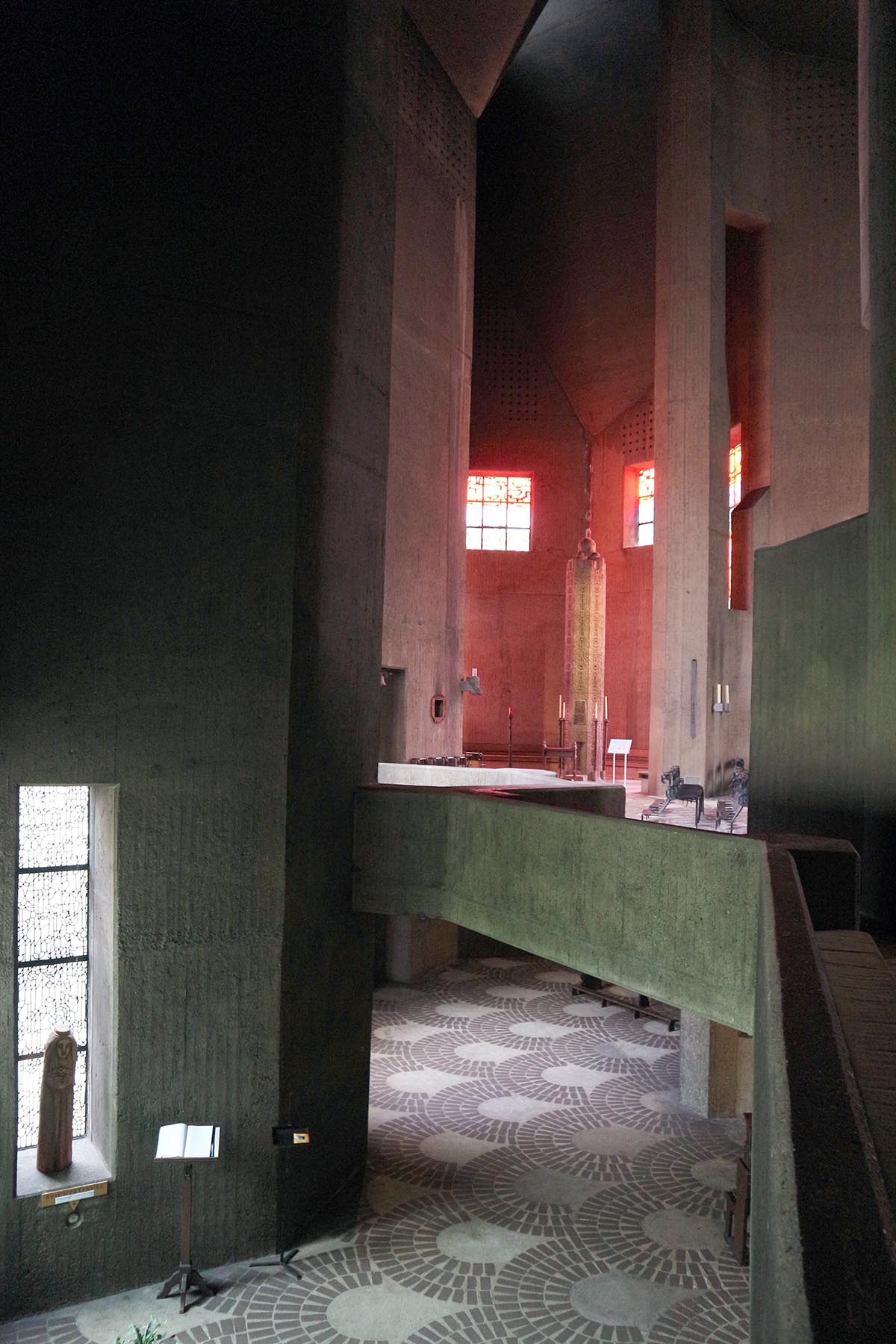
Pilgrimage church Mary, Queen of Peace (Königin des Friedens)
... and the reflections of the vividly coloured windows, typical of Böhm ...
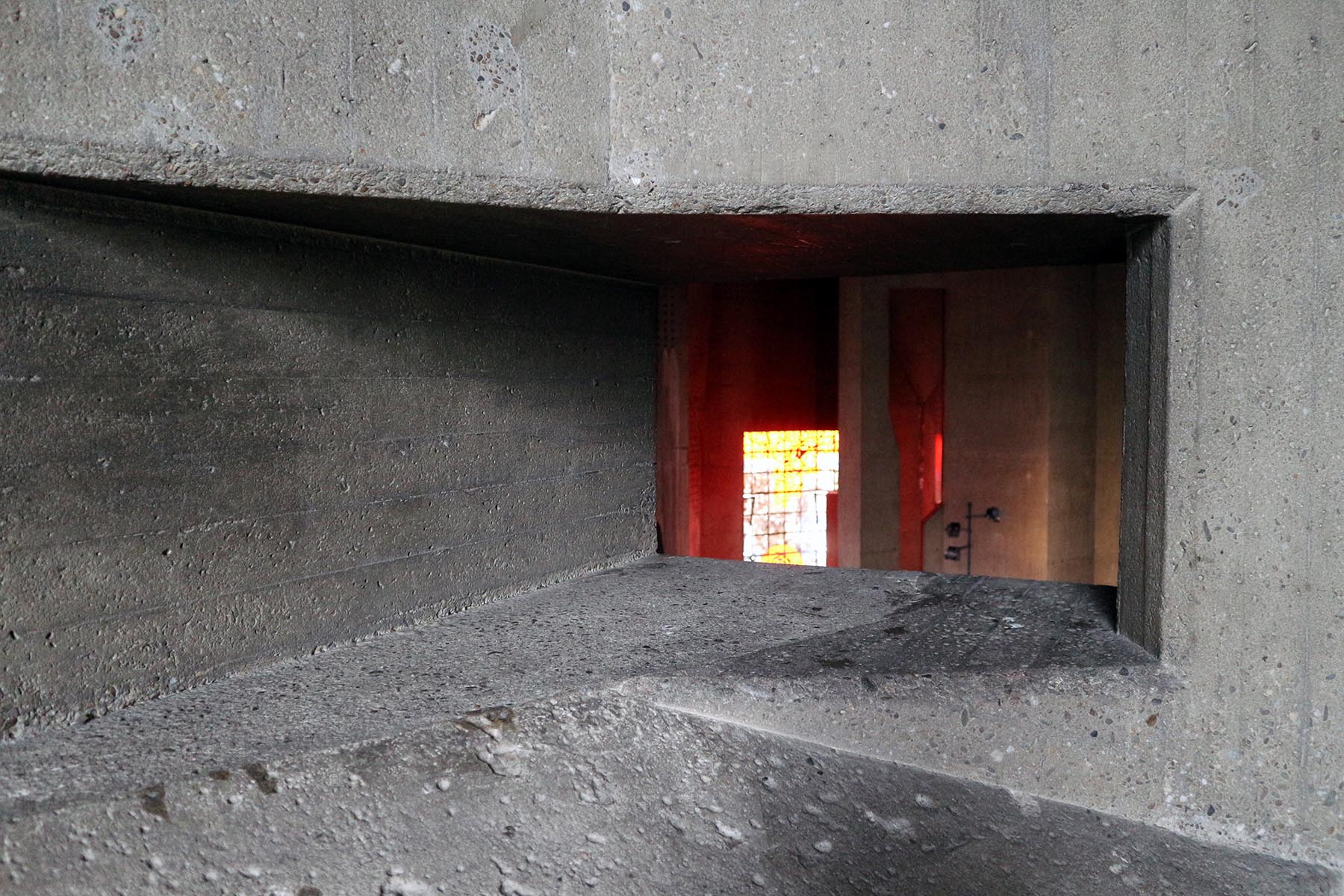
Pilgrimage church Mary, Queen of Peace (Königin des Friedens)
... hit you with their full power.
The sculpture
In Cologne, Gottfried Böhm built the Catholic church Christi Auferstehung (Christ’s Resurrection). The sculptural building stands elevated in the flow of the Clarenbach canal, which leads to the Aachener pond. The building is nested within itself many times over. A set of stairs winds around the exterior of the bell tower. Grey concrete and red brick are artfully combined on the façade and in the interior. The different niches and rooms serve different purposes in the Catholic liturgy. In a room originally conceived of as a baptismal chapel, a memorial chapel was installed for the beatified Edith Stein. This German philosopher and women’s rights activist of Jewish origins was a builder of bridges between Christians and Jews. She died on 9 August, 1942 in the concentration camp Ausschwitz-Birkenau.
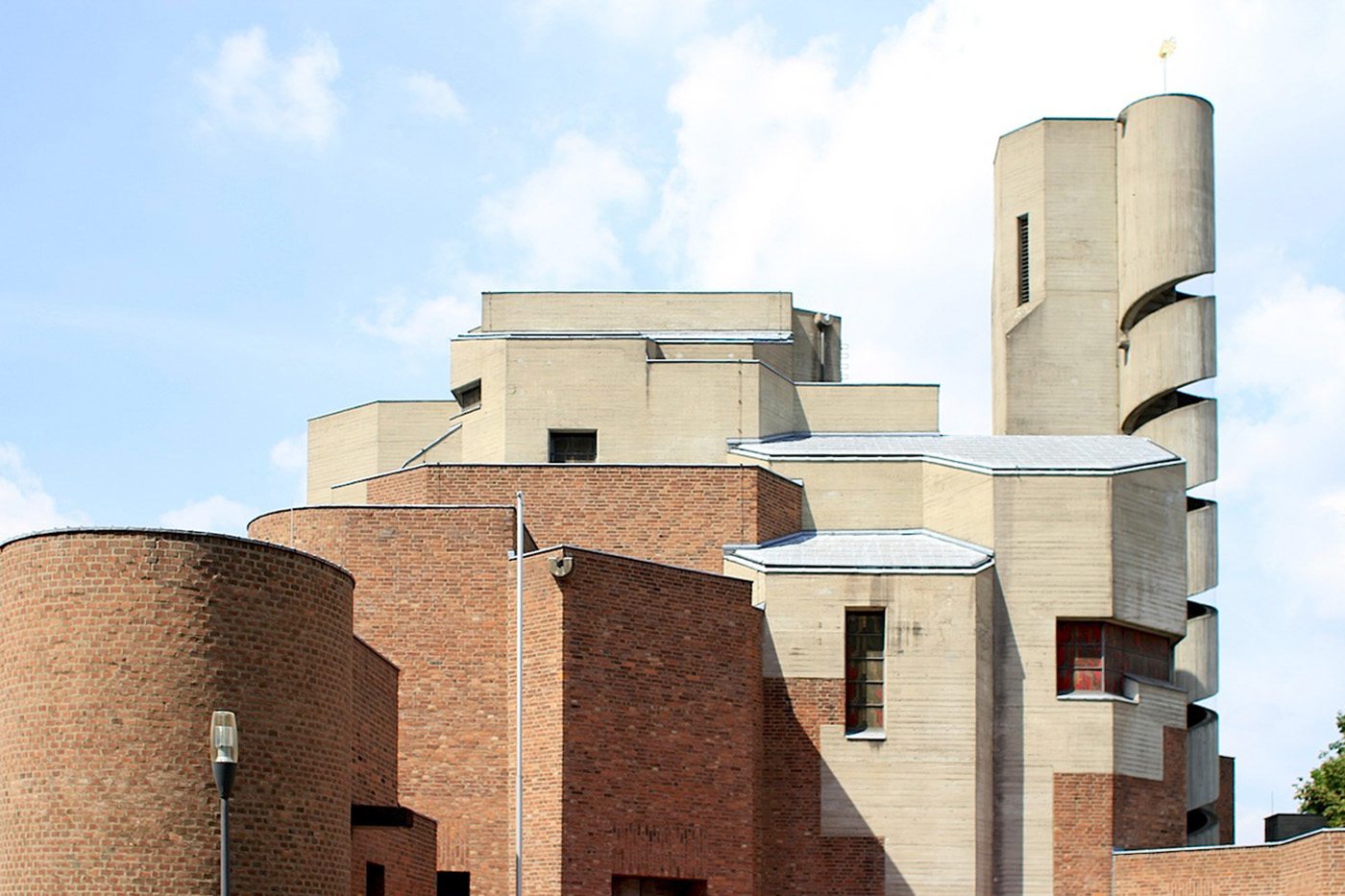
Christ’s Resurrection church (Christi Auferstehung)
By Gottfried Böhm. Completion: 1970. Brucknerstraße, 50931 Cologne
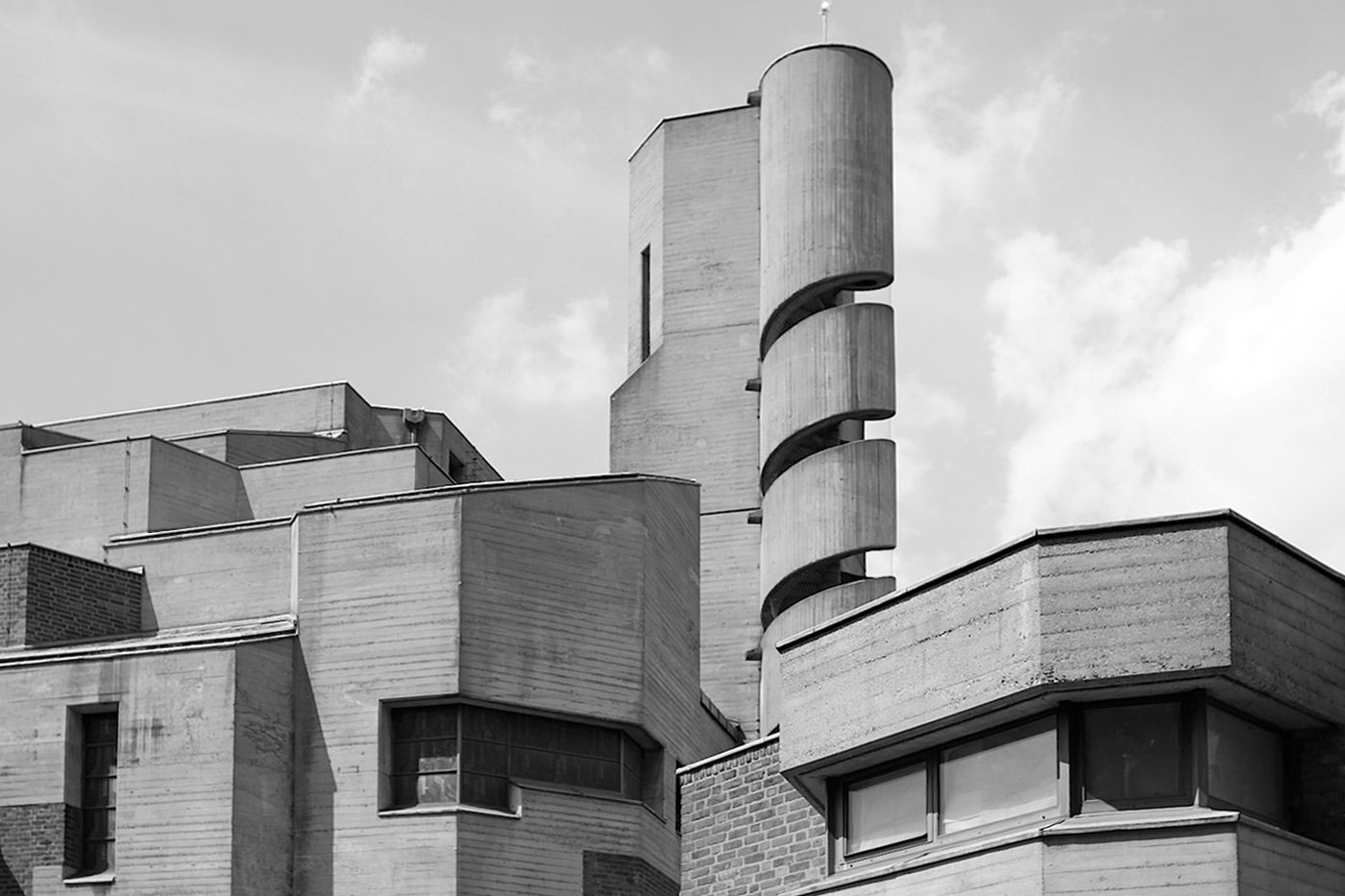
Christ’s Resurrection church (Christi Auferstehung)
Grey concrete and red brick are artfully combined ...
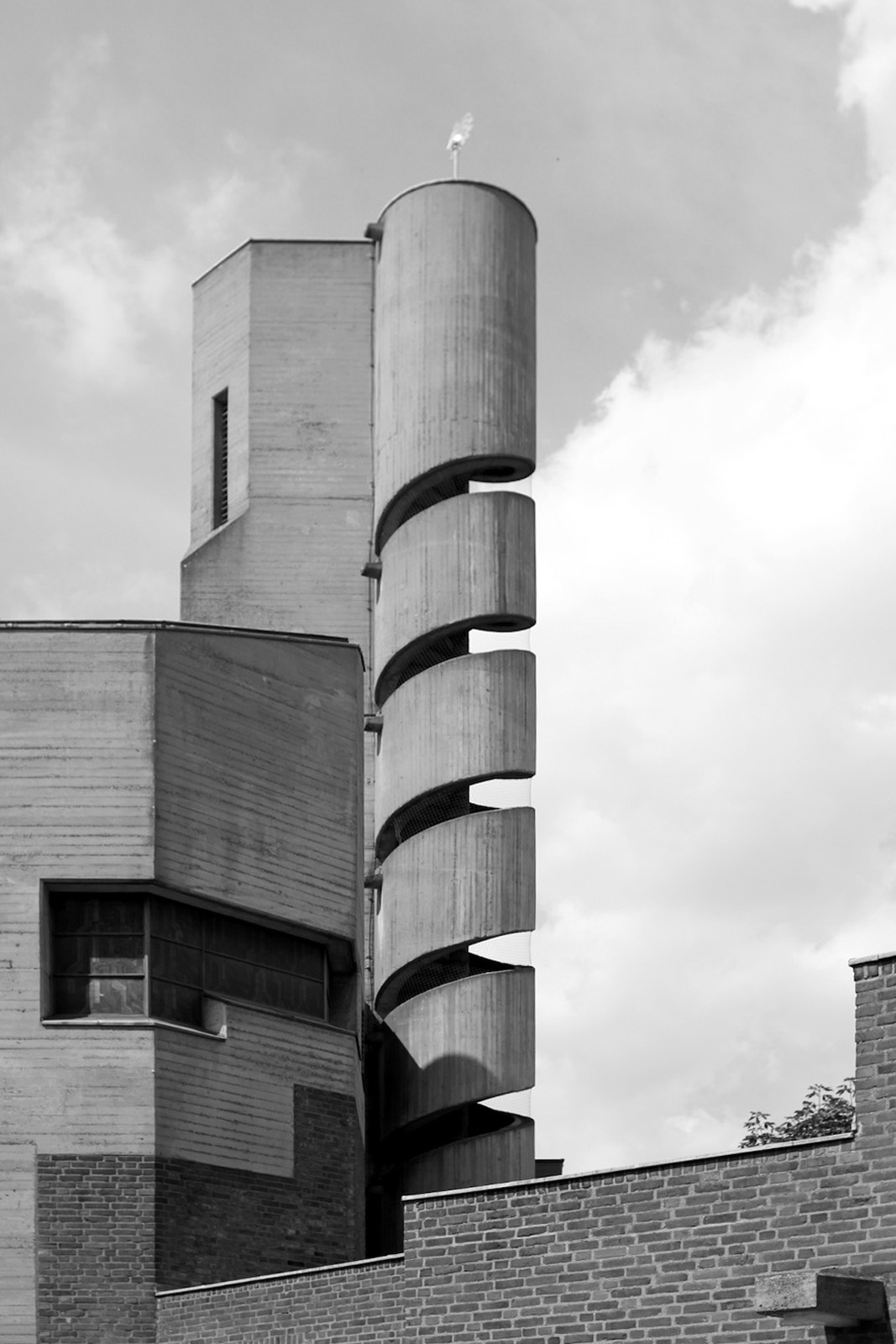
Christ’s Resurrection church (Christi Auferstehung)
... on the façade and in the interior.
The book
The building by architect Zvi Hecker develops from the row of houses on Springwall at the adjacent Altstadtpark in the form of a structural sculpture reminiscent of a hand or an open book. The structure’s five axes refer to places of Jewish history in Duisburg, especially to the site of the old synagogue built in 1875 and burnt down in 1938. The concrete construction engages with the Altstadtpark (Old City Park) like an open book and thus creates a relationship to Dani Karavan’s garden, the public area and the harbour basin. It is also meant to symbolise, in the gesture of an outstretched hand, the openness of Judaism.
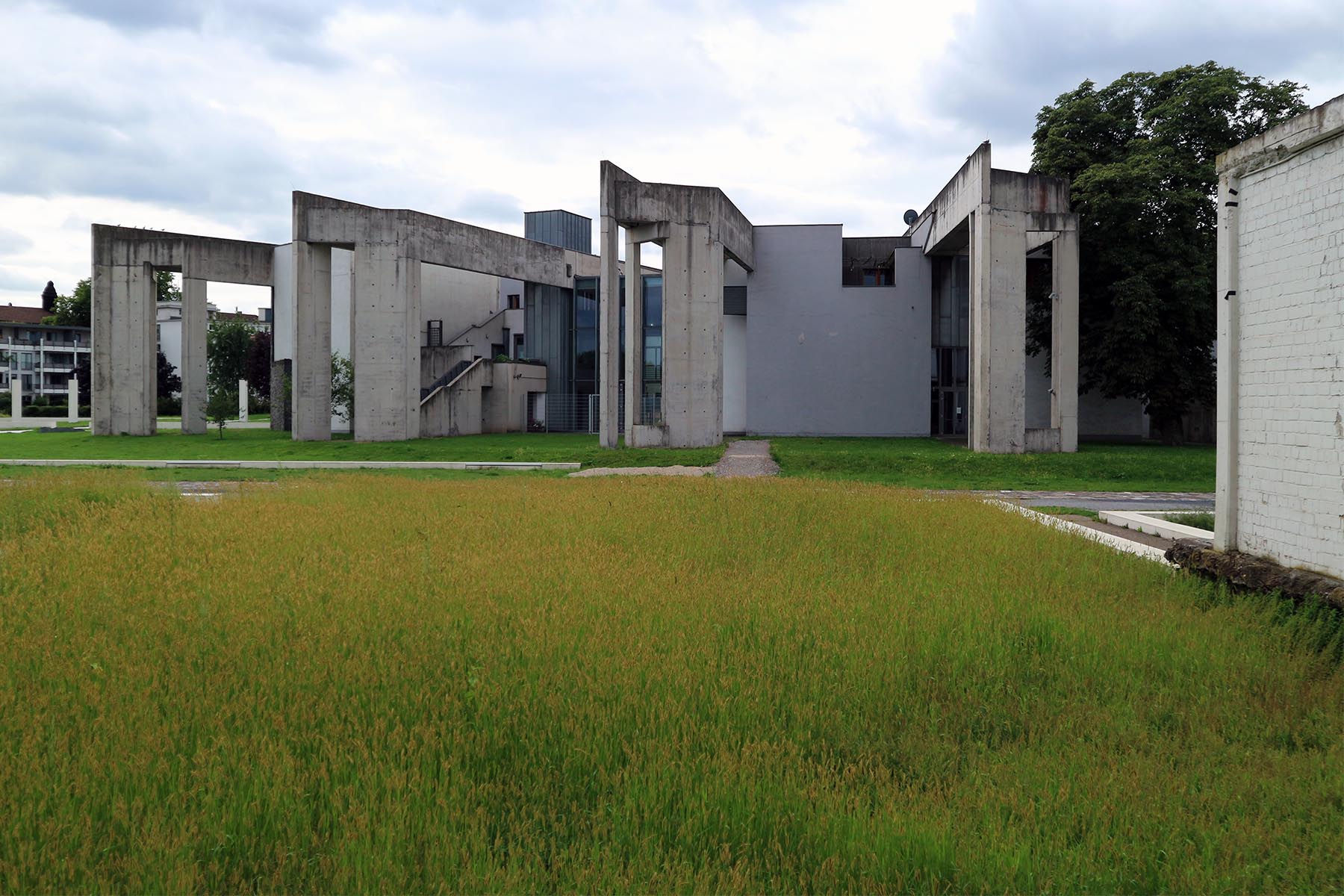
Synagoge and Jewish community centre
By Zvi Hecker. Completion: 1999. Springwall 16, 47051 Duisburg
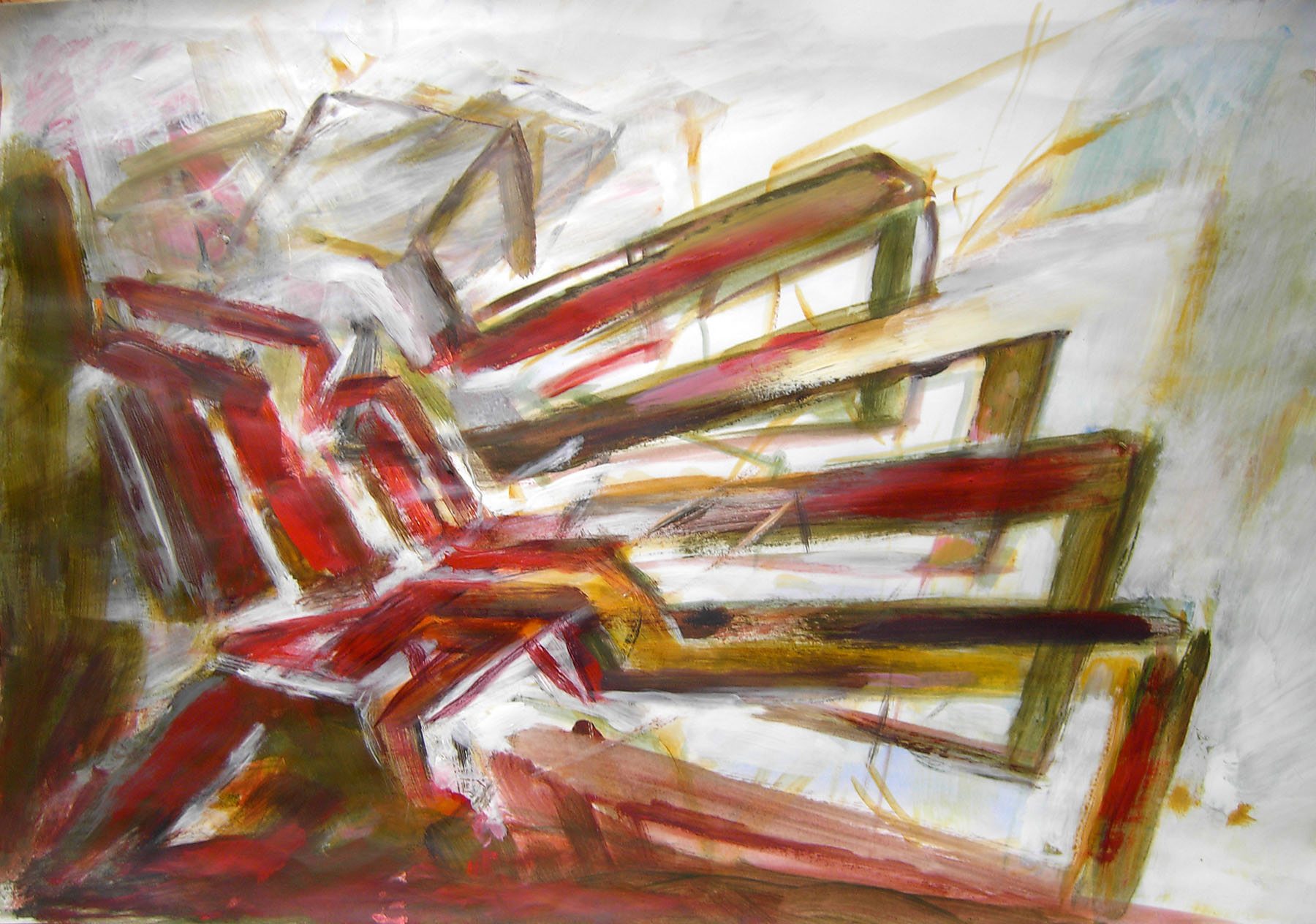
Synagoge and Jewish community centre
Sketch of the Berlin-based architect Zvi Hecker
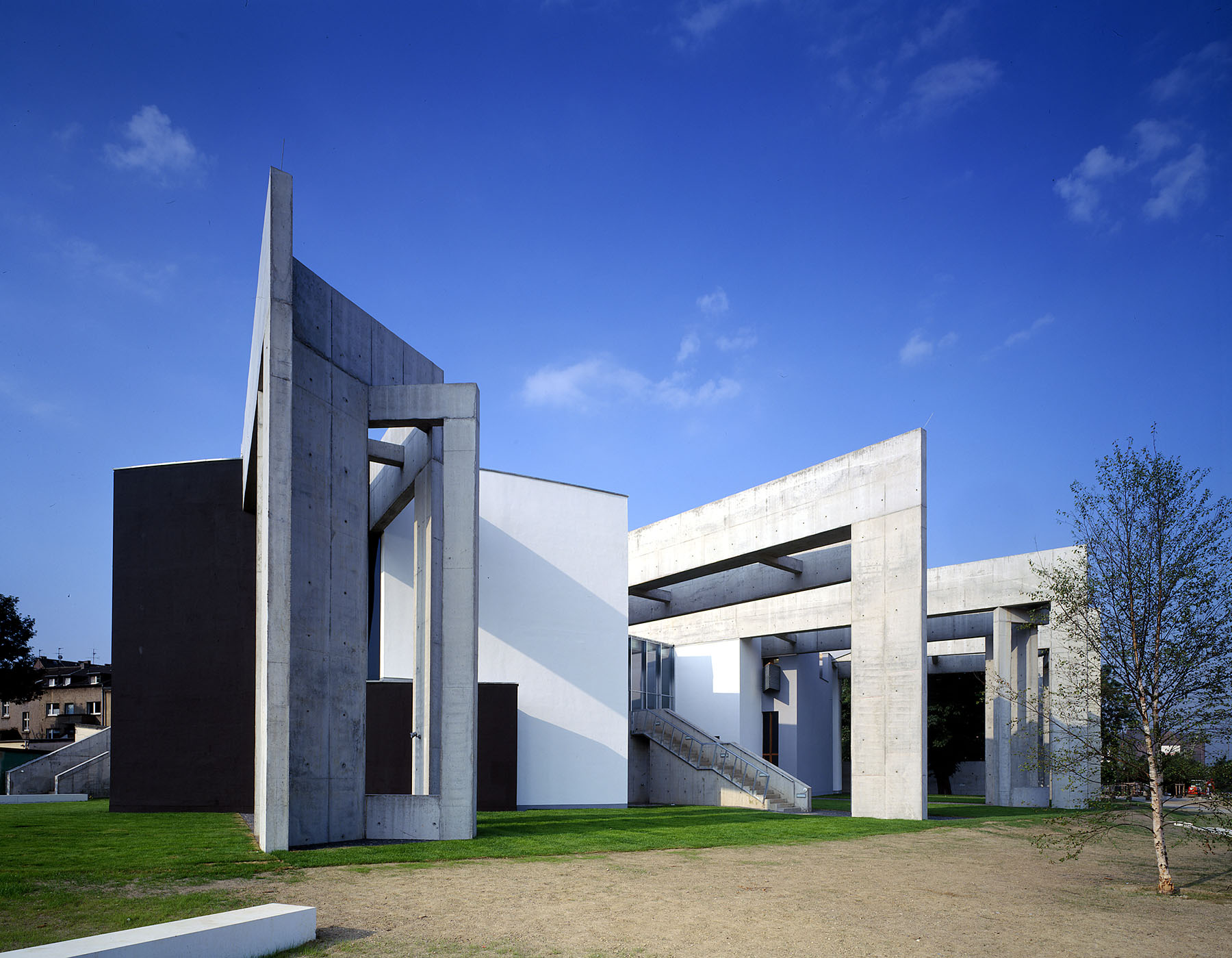
Synagoge and Jewish community centre
The structure’s five axes refer to places of Jewish history in Duisburg, especially to the site of the old synagogue built in 1875 and burnt down in 1938. The concrete arms stretching into Altstadtpark, which, incidentally, was created by the Dani Karavan, refer to the gigantic silos in the former industrial port.
The wooden house
A free-standing bell tower and a wide outdoor staircase mark the entrance to the evangelical Brückenschlag (Bridge-Building) community in Cologne-Stammheim. Sauerbruch Hutton placed church and chapel carefully in an existing grove of trees that now serves as a place for events. The simple buildings were erected from prefabricated elements of timber panels, clad on the exterior with a diagonal wooden casing of Siberian Larch and varnished with grey. The interior is minimalistic. A floor-to-ceiling screen made of 3,800 wooden slats in 27 different colours rises behind the altar. Across from it, there is a frosted pane of glass on which the shadow play of the trees in front of the church emerges. A magical space.
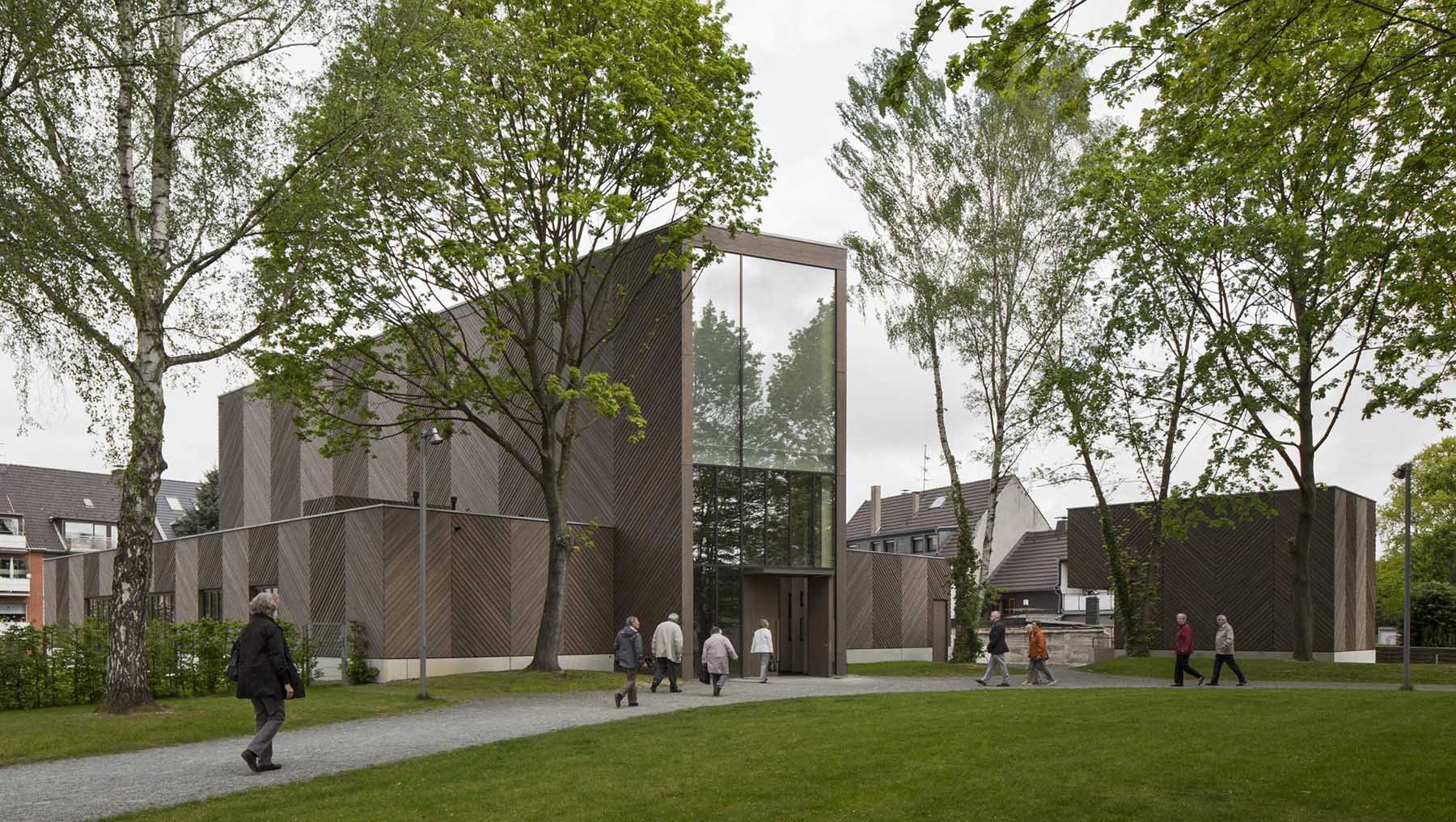
Immanuelkirche
By Sauerbruch Hutton. Completion: 2013. Bonhoefferstraße 8, 51061 Cologne
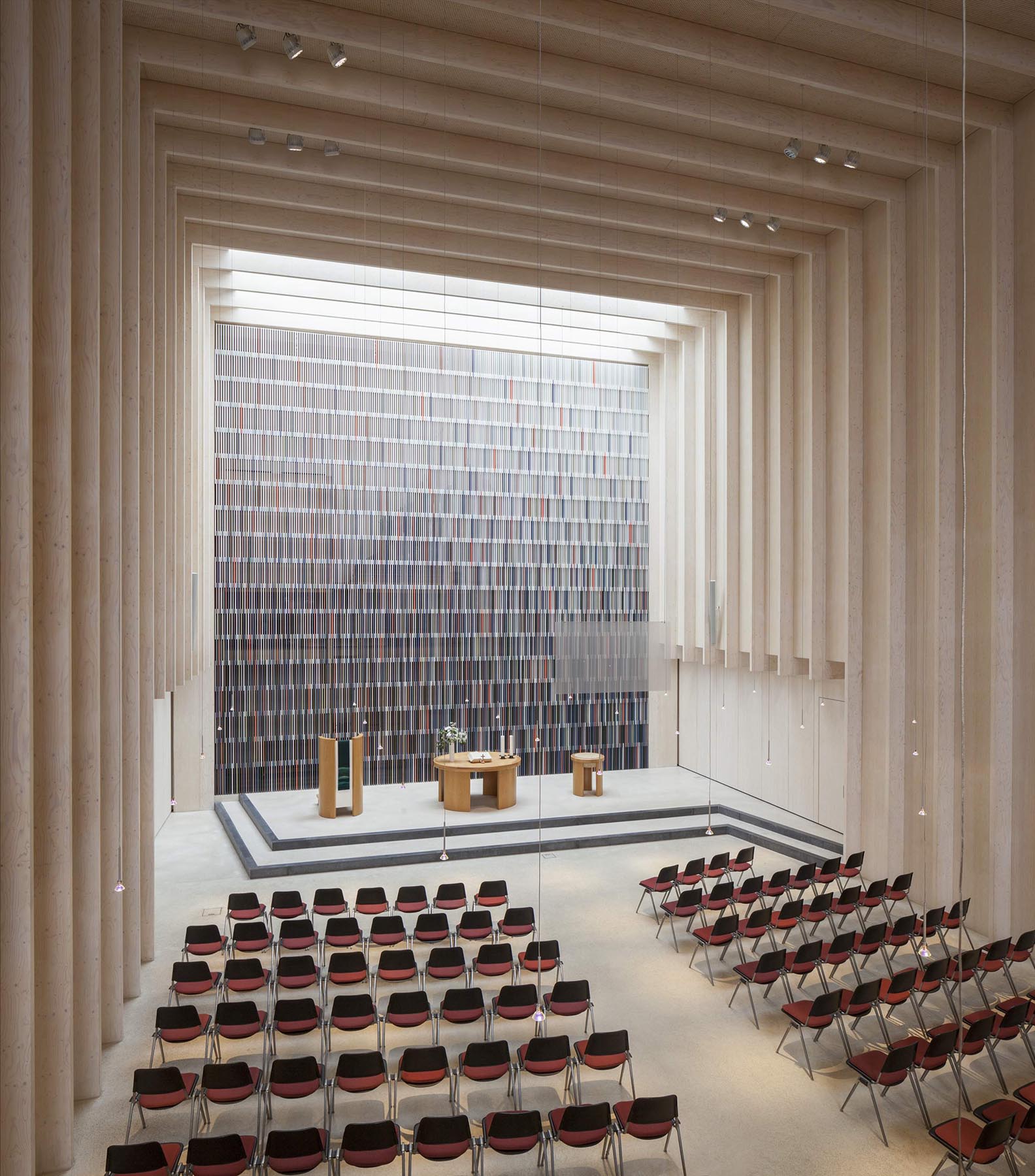
Immanuelkirche
The interior is minimalistic.
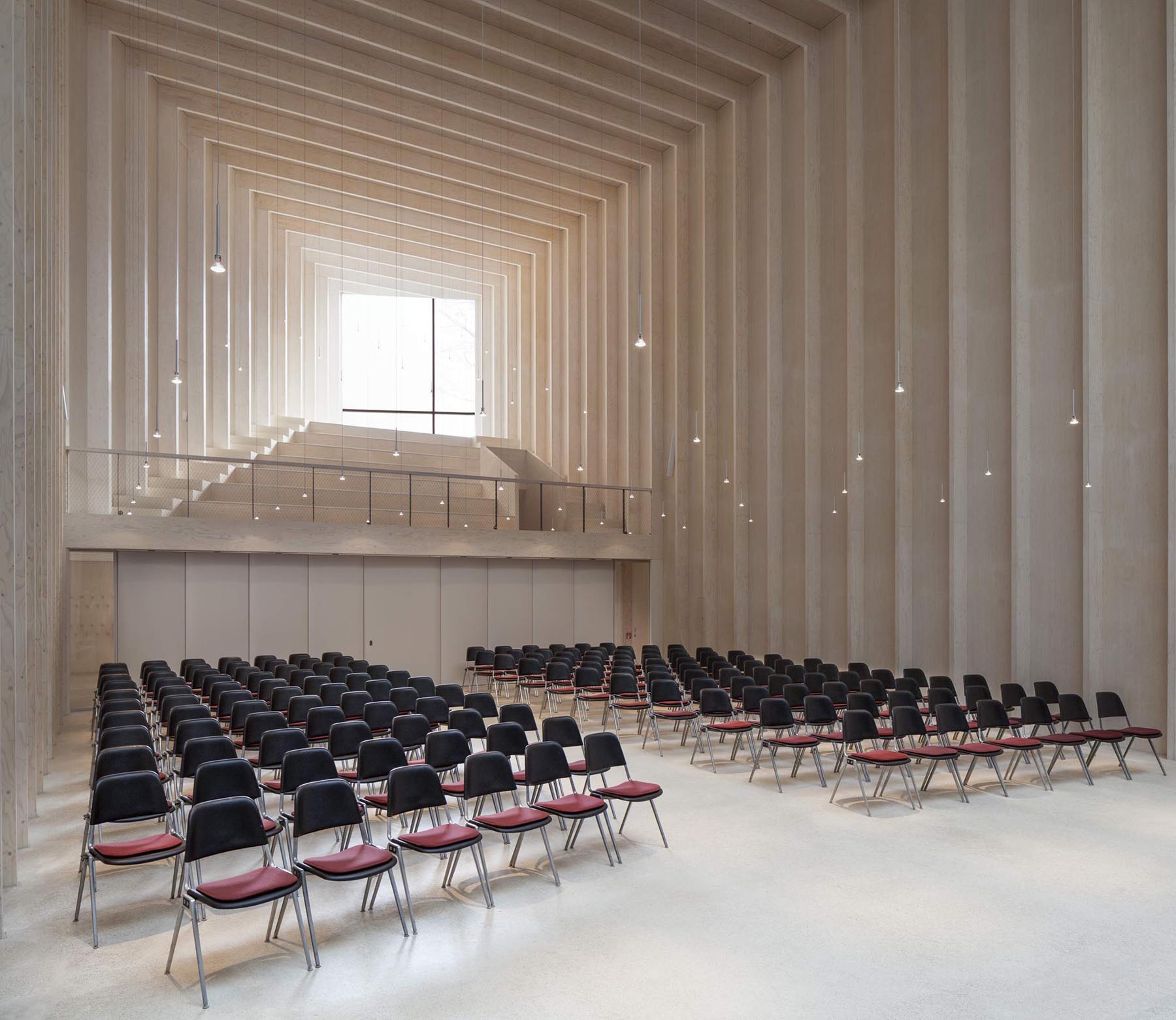
Immanuelkirche
A floor-to-ceiling screen made of 3,800 wooden slats in 27 different colours rises behind the altar.
The mosque
Mosques often have a sort of “back-garden” experience in Germany. The common aim seems to be merely not to stand out, merely not to take up too much space. Why, though? After all, Islam has belonged in Germany and Europe for a long time. Stupidity, ignorance and arrogance will not change that. In Cologne, a contemporary mosque complex is just being finished at a prominent location. The architectural language of the Böhm family is as usual light and eccentric. Luckily, this is no neo-Ottoman confection. It remains to be seen whether the DITIB (Turkish Islamic Union for the Institution of Religion) community is as transparent and open as the architecture of its central mosque: unfortunately, there are follies on all sides.
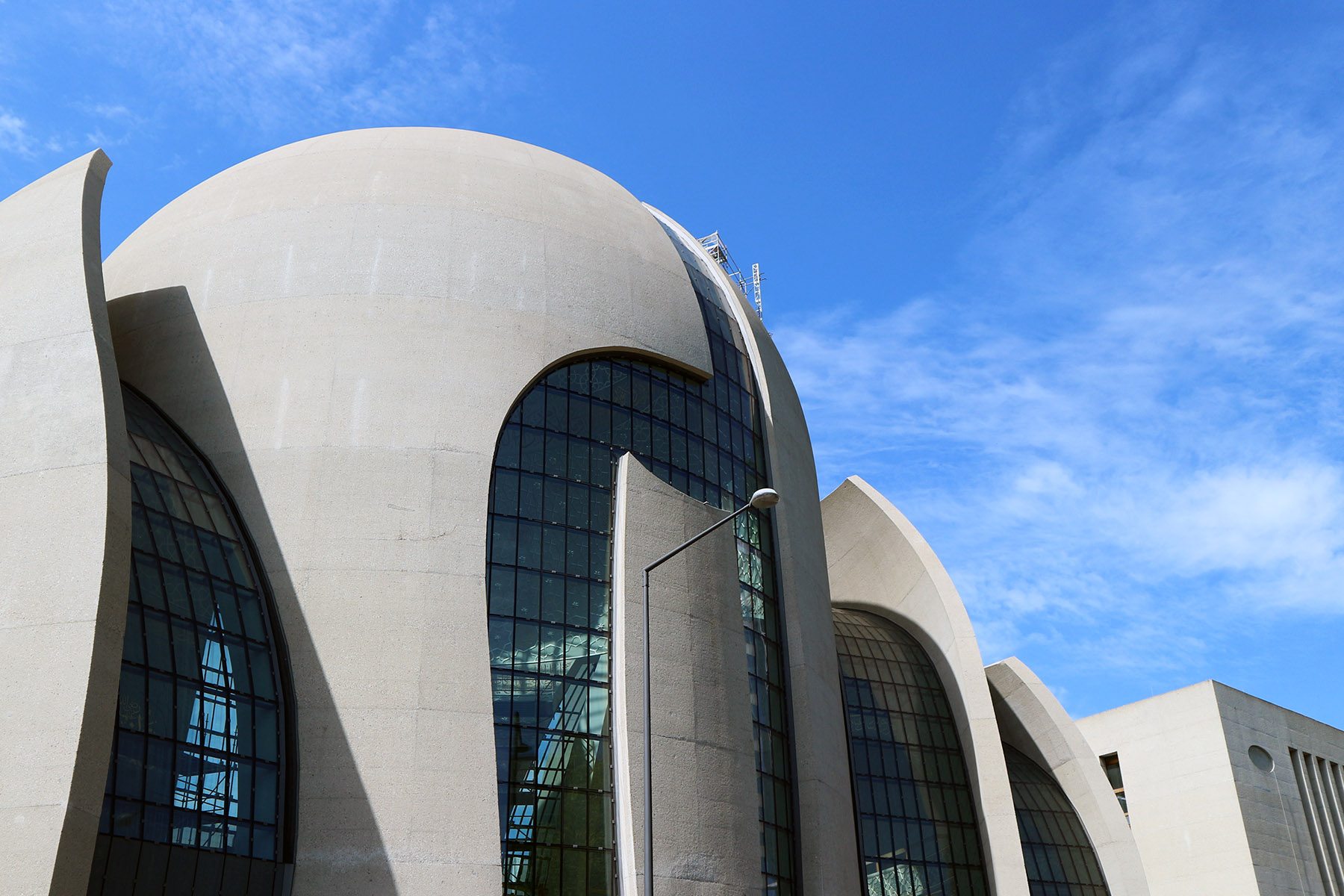
DITIB Zentralmoschee
By Gottfried and Paul Böhm. Completion: 2017. Venloer Str. 160, 50823 Cologne
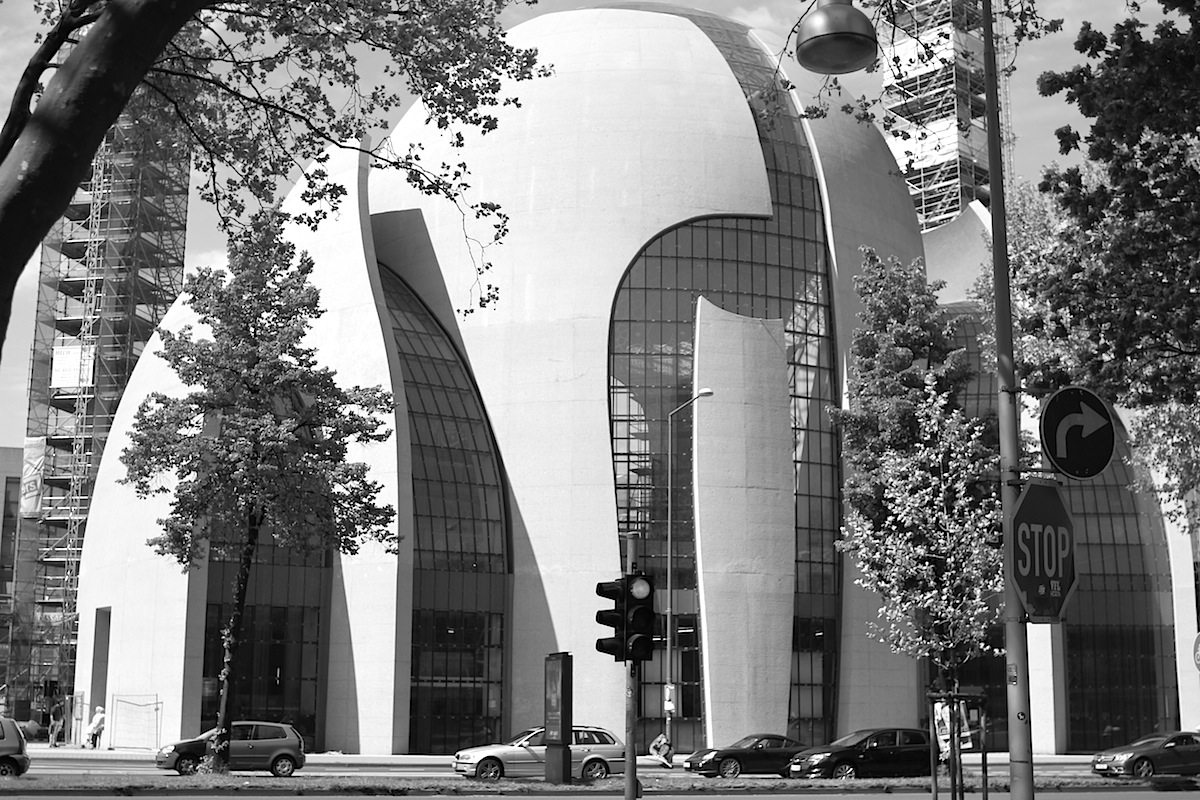
DITIB Zentralmoschee
Transparent and open with ...

DITIB Zentralmoschee
... a real edge.
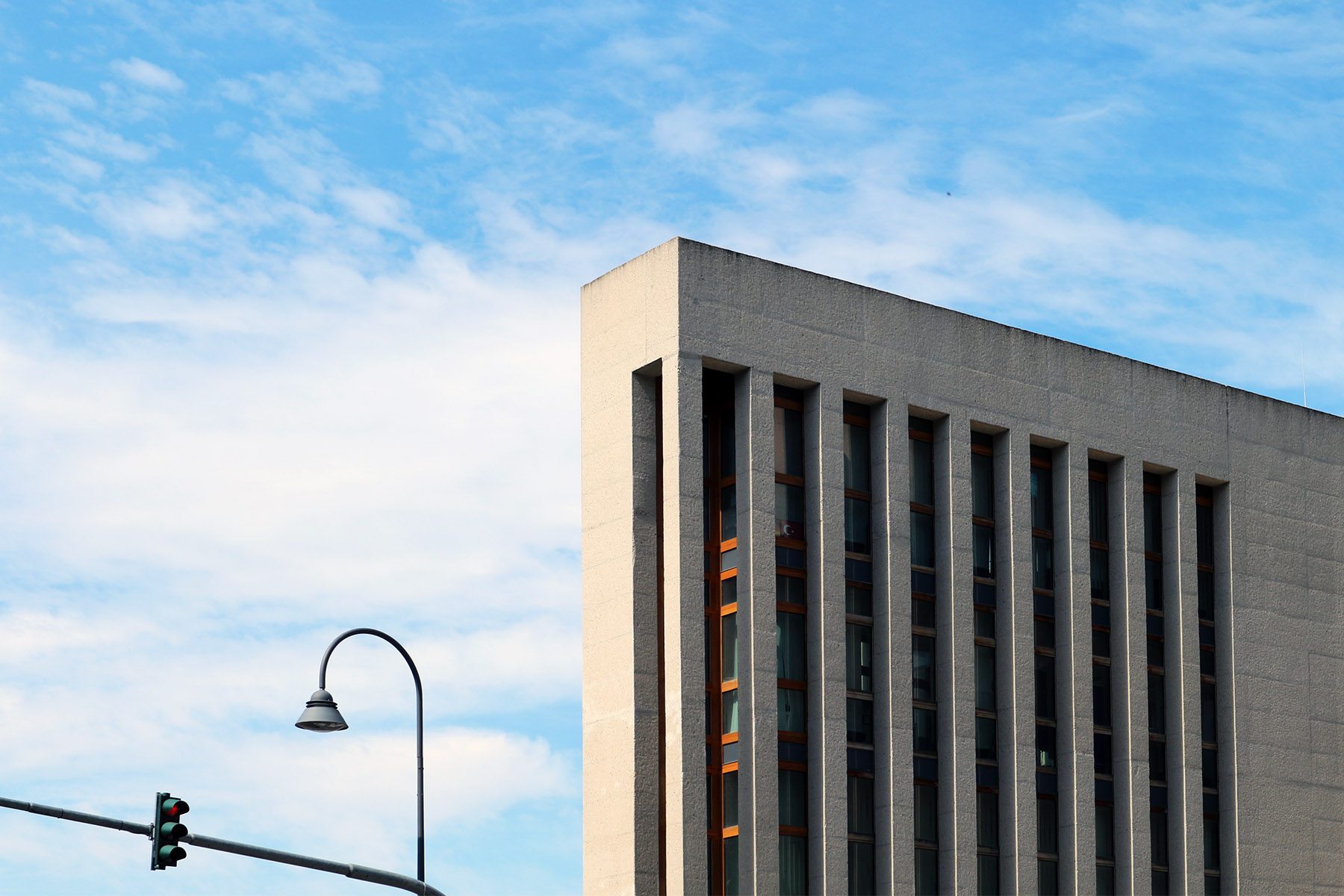
DITIB Zentralmoschee
The mosque is designed in non-Ottoman architectural style, with glass walls, two minarets and a dome.
Sacred architecture
Also known as religious architecture is a religious architectural practice concerned with the design and construction of places of worship or sacred or intentional space, such as churches, mosques, stupas, synagogues, and temples. Religious and sacred spaces are amongst the most impressive and permanent monolithic buildings created by humanity. Sacred, religious and holy structures often evolved over centuries and were the largest buildings in the world, prior to the modern skyscraper. While the various styles employed in sacred architecture sometimes reflected trends in other structures, these styles also remained unique from the contemporary architecture used in other structures. With the rise of Abrahamic monotheisms (particularly Christianity and Islam), religious buildings increasingly became centres of worship, prayer and meditation. The Western scholarly discipline of the history of architecture itself closely follows the history of religious architecture from ancient times until the Baroque period, at least. Sacred geometry, iconography, and the use of sophisticated semiotics such as signs, symbols and religious motifs are endemic to sacred architecture. Modern architecture spans several styles with similar characteristics resulting in simplification of form and the elimination of ornament. The most influential modernist architects in the early to mid 20th century include Otto Bartning, Dominikus Böhm, Rudolf Schwarz, and Auguste Perret. While secular structures clearly had the greater influence on the development of modern architecture, several excellent examples of modern architecture can be found in religious buildings of the 20th century. For example, Unity Temple in Chicago is a Unitarian Universalist congregation designed by Frank Lloyd Wright. Post-modern architecture may be described by unapologetically diverse aesthetics where styles collide, form exists for its own sake, and new ways of viewing familiar styles and space abound. (with Wikipedia material)